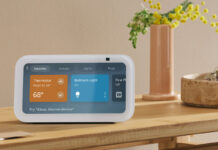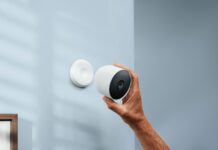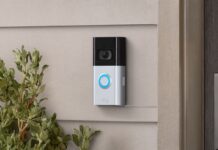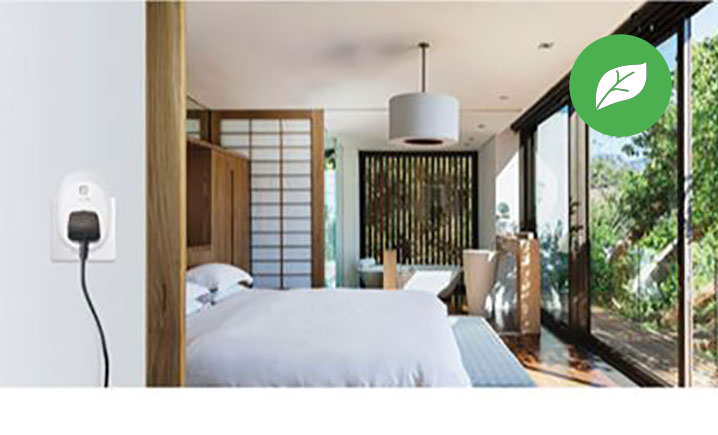 If you’re like most Canadians, then home energy consumption is likely to be a pretty big priority. Whether it’s simple economics (keeping energy costs down) or environmental concerns that drive us, we all want to have the most energy efficient homes possible. Join me today as I consider 4 useful tips for making your home an energy efficient smart home.
If you’re like most Canadians, then home energy consumption is likely to be a pretty big priority. Whether it’s simple economics (keeping energy costs down) or environmental concerns that drive us, we all want to have the most energy efficient homes possible. Join me today as I consider 4 useful tips for making your home an energy efficient smart home.
Tip #1: Take Control of Your Home’s Heating Profile.
This first tip can easily be accomplished with the incredibly smart Nest Thermostat.

Why is the Next Thermostat so smart, you ask? Well, for one thing, it actually learns (and remembers) the temperature profile of your home. In fact, it even learns your schedule (of comings and goings) and programs itself to be more energy efficient. This learning process occurs over a period of time as the Nest thermostat tracks your heating and cooling preferences, which rooms you spend the most time in, and your work (away from home) schedule. This process is accomplished via Nest’s Smart Learning Technology. Once you’ve built up some history with your system, the Nest Thermostat assesses your collected data and programs itself for optimal function. This can reduce your overall energy consumption (at least in the area of heating and cooling) by as much as 20%. It’s super smart, and so will you be for adopting it! With the Nest Thermostat, you’ll save a sum of money while also being a good steward of the environment—what a rewarding proposition!
Tip #2: Easily Manage what’s On or Off—Remotely.
If you could turn lights and other appliances on and off remotely (and at any time) via a dedicated app, it would be much easier to keep your power consumption down and enjoy the cost benefits of having an energy efficient home. This kind of any time, anywhere management of what’s on or off in your home is certainly possible, and it’s best accomplished via a smart home product like the Wemo Mini Smart Plug.
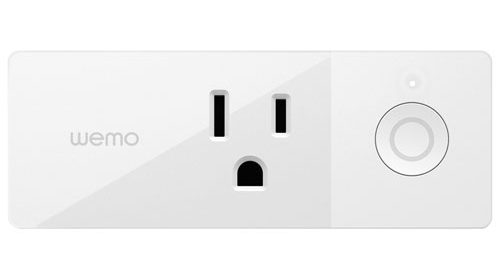 I don’t know about you, but there have been times when I have intentionally left a light on all night simply because I had become too relaxed to get up and turn it off. For example, if the last thing you do before falling asleep at night is read a chapter or two in your favourite book, it can be most disturbing to remember that you forgot to turn the outside light off. On more than one occasion I have stumbled from my bed in a zombie like state to turn something off that had previously been left on. Equally as often I have thought to myself, “To heck with that! It’ll have to stay on.” In these situations I have chosen sleep over electricity conservation, and I honestly haven’t regretted it. Still, had I been able to simply scroll through a menu of apps on my smart device and turn off the light (or whatever else was left on) without having to stir from my very relaxed position, I would very gladly have conserved the power. What better use might there be for one’s trusty smart phone or tablet!?
I don’t know about you, but there have been times when I have intentionally left a light on all night simply because I had become too relaxed to get up and turn it off. For example, if the last thing you do before falling asleep at night is read a chapter or two in your favourite book, it can be most disturbing to remember that you forgot to turn the outside light off. On more than one occasion I have stumbled from my bed in a zombie like state to turn something off that had previously been left on. Equally as often I have thought to myself, “To heck with that! It’ll have to stay on.” In these situations I have chosen sleep over electricity conservation, and I honestly haven’t regretted it. Still, had I been able to simply scroll through a menu of apps on my smart device and turn off the light (or whatever else was left on) without having to stir from my very relaxed position, I would very gladly have conserved the power. What better use might there be for one’s trusty smart phone or tablet!?
Tip #3: Reduce Energy Usage with LED Lighting.
If you want to save energy by switching to low energy light bulbs, then you absolutely must consider the Philips Hue A19 Smart LED Light Bulb Starter Kit! This energy efficient set includes 3 individual bulbs and a special Hue Bridge to tie everything together.
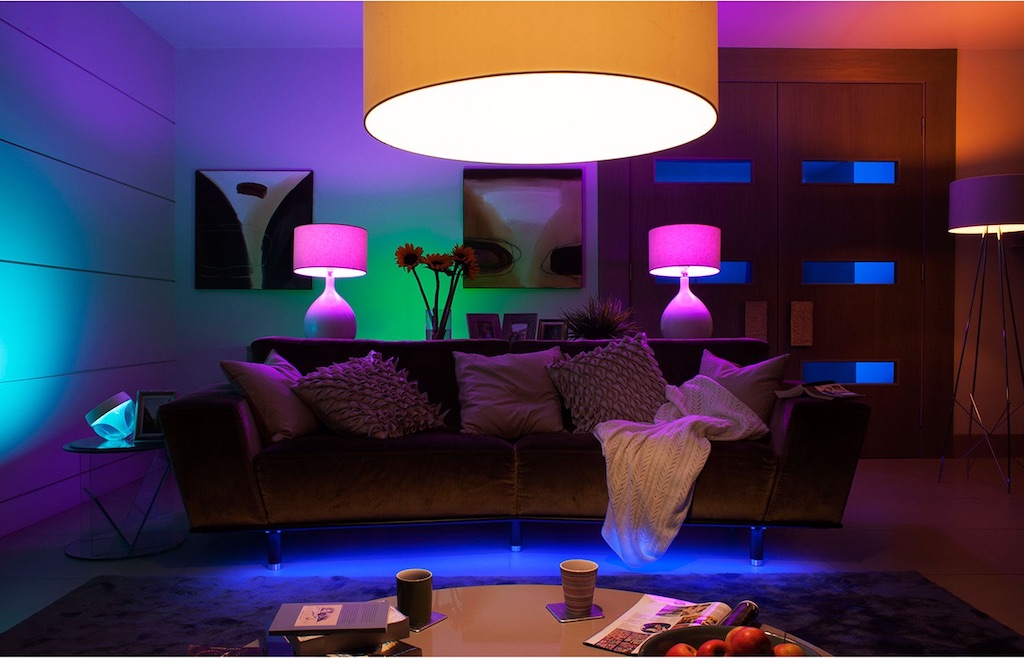 The Philips Hue Starter Kit will not only reduce your energy costs due to the lower power consumption of LED lights versus old-fashioned (incandescent) light bulbs, but the lifespan of a Philips Hue A19 smart LED light bulb is an incredible 15,000 hours, meaning you’ll save money on light bulb replacement costs as well. What’s more, Philips Hue works with both the Nest and HomeKit systems to provide you with options for integrating the bulbs into your existing smart home ecosystem. Such systems provide the convenience of being able to set up lighting schedules (and various other scenarios) whereby your lights can automatically turn on or off according to your wishes. For instance, set a security light to come on whenever you leave the house, or have an outside light come on to light your way whenever you arrive at home. Add to that the fact that Philips Hue bulbs can easily be dimmed to further conserve energy and you’ve got one amazing power saving product on your hands!
The Philips Hue Starter Kit will not only reduce your energy costs due to the lower power consumption of LED lights versus old-fashioned (incandescent) light bulbs, but the lifespan of a Philips Hue A19 smart LED light bulb is an incredible 15,000 hours, meaning you’ll save money on light bulb replacement costs as well. What’s more, Philips Hue works with both the Nest and HomeKit systems to provide you with options for integrating the bulbs into your existing smart home ecosystem. Such systems provide the convenience of being able to set up lighting schedules (and various other scenarios) whereby your lights can automatically turn on or off according to your wishes. For instance, set a security light to come on whenever you leave the house, or have an outside light come on to light your way whenever you arrive at home. Add to that the fact that Philips Hue bulbs can easily be dimmed to further conserve energy and you’ve got one amazing power saving product on your hands!
Tip #4: Manage Power Flow with Rechargeable Devices.
If you want to control the energy output of a particular device in your home, what better way than to go completely unplugged? Many of today’s most popular smart home devices run on fully rechargeable batteries, meaning that rather than allowing them to constantly draw from your power supply, you can simply charge their batteries and use them as needed.
 Take for example the NETGEAR Arlo Pro Wireless Security System with 4 HD Cameras. This system runs entirely on a 2440mAh rechargeable battery, meaning you have complete control over how often you recharge your batteries and how many cameras you choose to employ at any given time. If you choose to limit the number of times you recharge your batteries in a given billing cycle, you can fully control how much power your home security system is using. Maybe in some months you want to cut down from using all 4 cameras to using only 3, or even 2. You can easily reduce your home’s overall power consumption by adopting this strategy. Some dedicated energy conservers might even use a plug-in adapter to charge their Arlo Pro battery via their car’s cigarette lighter, cutting out their home electrical grid entirely. If you’re both security conscious and energy conscious, you’ll love being able to better control both of these aspects of your life using a rechargeable camera system.
Take for example the NETGEAR Arlo Pro Wireless Security System with 4 HD Cameras. This system runs entirely on a 2440mAh rechargeable battery, meaning you have complete control over how often you recharge your batteries and how many cameras you choose to employ at any given time. If you choose to limit the number of times you recharge your batteries in a given billing cycle, you can fully control how much power your home security system is using. Maybe in some months you want to cut down from using all 4 cameras to using only 3, or even 2. You can easily reduce your home’s overall power consumption by adopting this strategy. Some dedicated energy conservers might even use a plug-in adapter to charge their Arlo Pro battery via their car’s cigarette lighter, cutting out their home electrical grid entirely. If you’re both security conscious and energy conscious, you’ll love being able to better control both of these aspects of your life using a rechargeable camera system.
What’s more, with the ability to see what’s going on in your home no matter where you may be in the world, you can easily use your Arlo Pro cameras in tandem with some of your other smart home systems (Wemo Smart Plugs, Philips Hue Lights, etc.) to turn off a light or appliance that was mistakenly left on. Similarly, you can turn off your automatic lawn sprinkler from the road if you see that it’s raining back home. Thus, being able to check in on your home remotely gives you additional options for controlling energy consumption.
There’s no doubt about it—the goal of having an energy efficient home is a worthy pursuit for all Canadians! Whether you own your home or rent, there’s a high probability that you pay a monthly electricity bill, and keeping that bill as low as possible is a goal that benefits both your pocketbook and the environment. If we simply take just a little bit of time to strategize how to accomplish this task, there’s no doubt of achieving great results!

